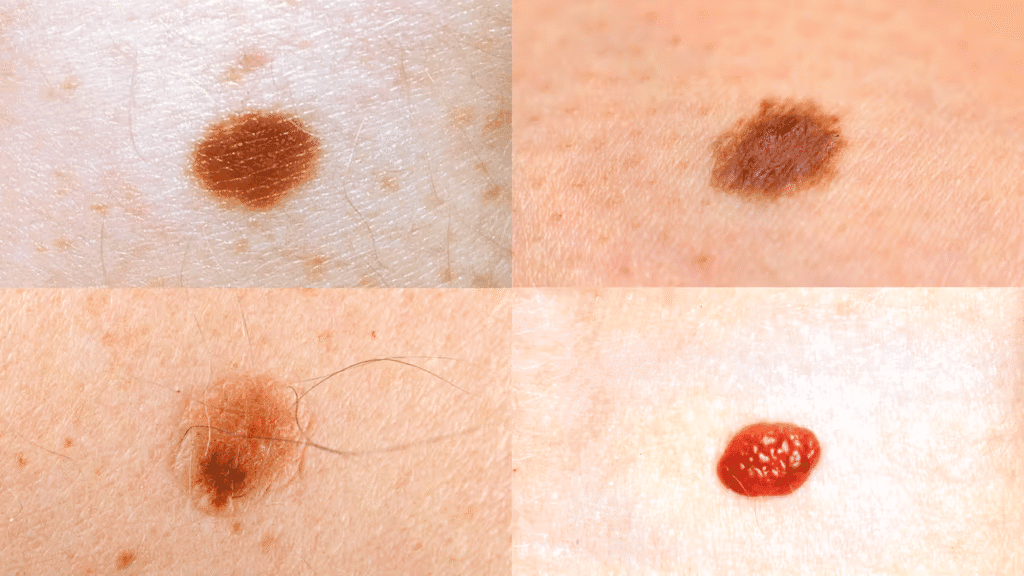
Most moles are harmless — small clusters of pigmented skin cells that often remain unchanged for years. But occasionally, a mole or pigmented spot can change in ways that signal something more serious. Knowing what to look out for helps catch skin cancer early, when treatment is most effective.
✔ When Should You Worry About a Mole?
Keep an eye out for the “ABCDE” warning signs:
A – Asymmetry: One half doesn’t match the other
B – Border: Irregular, notched or blurred edges
C – Colour: Uneven shades of brown, black, red, white or blue
D – Diameter: Larger than 6mm (about the size of a pencil rubber)
E – Evolving: Any change in size, shape, colour, or symptoms like itching, bleeding, or crusting
These signs don’t confirm skin cancer but are important reasons to get the mole checked.
✔ Where on the Body Should You Be Extra Cautious?
Skin cancer can appear anywhere — even places that rarely see the sun. Some areas need special attention:
- Face, neck, ears, lips, and eyelids – High sun exposure and often missed in self-checks
- Scalp – Especially in people with thinning hair
- Back and shoulders – Common in men
- Legs – A common site for women
- Palms, soles, and under the nails – Less common, but higher risk in people with darker skin tones
- Inside the mouth or on the gums – Rare, but possible
New or changing pigmented spots in these areas deserve prompt medical attention.
✔ What Increases Your Risk?
You may be more at risk if you have:
- A history of sunburns or regular sun exposure
- Fair skin, freckles or red/blond hair
- A large number of moles (more than 50)
- Family or personal history of skin cancer
- Irregular or atypical moles
- Use of tanning beds
- A weakened immune system
✔ Does Sun Exposure Really Matter?
Yes. UV radiation from the sun (or tanning beds) is the leading cause of skin cancer. It damages DNA in skin cells and increases your risk over time — even if you never burn.
Top tip: Use a broad-spectrum SPF 30+ daily — even on cloudy days in the UK.
✔ What Happens If a Mole Looks Suspicious?
If a mole is concerning, your GP may suggest:
- Dermatoscopic exam – A close-up, magnified view of the mole
- Photographic monitoring – To track changes over time
- Biopsy or removal – If the mole needs further investigation
Most removals are quick and done under local anaesthetic. If needed, your GP can refer you to a dermatologist for specialist care.
✔ Trust Your Instincts — Get It Checked
At OneMedicine, we offer skin checks for peace of mind. Whether you’re worried about a new mole or have one that’s changed recently, we’re here to help.
Don’t wait. If something doesn’t look right, book a mole check today.






